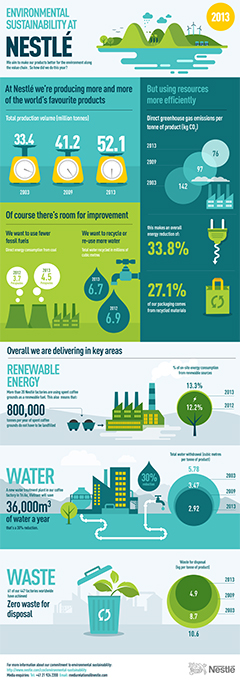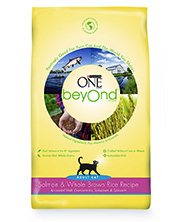Green Converting | Nestlé Pulls No Punches on Bioplastics
- Published: January 12, 2017, By Trina Tan Ker Wei
Addressing the Innovation Takes Root bioplastics conference, Sustainability Specialist Sokhna Gueye delivered some uncomfortable messages.
In packaging, while the consumer is king, it is the brand owner that specifies the product and writes the checks. So any presentation that allows industry a peek into the paymaster’s long-term thinking is bound to draw a full house.

This was the case when Nestlé, arguably the world’s largest Fast Moving Consumer Goods (FMCG) food brand, took the stage at the biannual Innovation Takes Root conference, NatureWorks' collaborative biopolymers forum for the global Ingeo community, which was held March 30–April 1, 2016. Sokhna Gueye, Nestlé’s packaging environmental sustainability specialist, began comfortably by acknowledging the role packaging plays in food waste reduction, product protection, and contribution to sustainable development, as she outlined Nestle’s Environmental Sustainability Policy. But very quickly things got quite uncomfortable.
As a global food giant, Nestlé is probably at the forefront of transparency and actionable policies that take the wider perspective of sustainability, including gender equality, rural development in the developing world, responsible sourcing, etc. Gueye presented and narrowed down the global strategy to the brand’s key packaging focus: Sustainability by Design, following a Life Cycle Analysis (LCA) approach, to ensure all packaging is optimized to use minimal adequate materials by weight and volume while maintaining product and environmental performance through to end of life.
Noting how many people in industry often take an extremely simplistic view when it comes to attempting to decide which packaging solution is more ‘sustainable’ – the answer, she stressed, is that there is no one sustainable packaging solution as end-use and geographical market applications vary; “We just cannot assess environmental impact using ‘common sense.’ And that is why we are using a life cycle approach to identify the key contributors of the environmental impact of our food products, and also minimize our environmental impact of products and activities.”
 Nestlé uses EcodEx, an in-house-developed product ecodesign tool that takes into account the entire life cycle of a product, uses a representative set of relevant indicators—i.e., greenhouse gas emissions, water consumption, non-renewable energy and minerals, impacts on ecosphere, and land use—and can be used by non-LCA experts for quick result generation.
Nestlé uses EcodEx, an in-house-developed product ecodesign tool that takes into account the entire life cycle of a product, uses a representative set of relevant indicators—i.e., greenhouse gas emissions, water consumption, non-renewable energy and minerals, impacts on ecosphere, and land use—and can be used by non-LCA experts for quick result generation.
“With end-of-life, we want to contribute to initiatives that help the recovery of used packaging and address littering, aim to use recycled materials with an environmental benefit, and are appropriate, with a focus on paper, paperboard, corrugated, and plastic applications,” explained Gueye.
Challenging Questions
“We also want to lead the development and use of renewable materials,” she said, cueing-in bioplastics but in the unexpected form of a barrage of uncomfortable questions for the dedicated NatureWorks’ audience to churn:
“For us, bioplastics raise several questions, one of which is end-of-life compostability and biodegradability.”
She then queried the messages fundamental to the core of the bioplastics sector: Availability and acceptance in the composting scheme and environmental impact compared to other options. Even when sourced from sustainably managed resources, do bioplastics really reduce resource depletion and global warming when one takes into consideration the long-term impact on water use and agriculture?
Plain-speaking Gueye posed many rhetorical questions before delivering the Nestlé perspective: “Today there is limited availability of composting facilities. Even where they exist, compostable packaging is not necessarily accepted by the market.
“As a global brand, the great challenge is that we can’t put compostable material into markets and tell our consumers it is compostable, because that is not necessarily the reality at end of life in their country. If they don’t have the schemes or means to compost, we cannot claim the benefit!” she rightly noted.
“Even then, composting is not necessarily the most appropriate end of life option, compared to other options like recycling, direct fuel substitution, or incineration with energy recovery. Composting frequently brings less environmental benefits.” Uncomfortable words for an audience for whom composting is a KSP (key selling point).
She wasn’t done beating up her audience: “When compared to conventional plastics, bioplastics do have the potential to reduce greenhouse gas emissions and save on non-renewable energy use. “But when we also look at the agricultural production side of the equation—fertilizer use, the impact of pesticides on animals, and water use—bioplastics mostly consumes more greenhouse gases, not less.”
After letting that echo round a by-then stony, silent room, she delivered the get-out-of-jail card: “But it doesn’t mean that it is bad. It means that there is potential to improve in these categories by having better agricultural practices and using alternative sources.”
Material Improvements

Gueye reiterated the importance of packaging material performance and suggested areas the PLA industry should be addressing if it expects to win Nestlé over to the cause.
“In general, first generation bioplastics materials are moisture-sensitive compared to conventional plastic materials. If you want to have the same performance, you need to have more weight, and that could impact on the environmental benefits,” she said.
“So first, it is key to have moisture barriers in place. Most of our products are coffee and beverages and dry food, and for those, either you want to keep the moisture inside or outside the packaging—moisture control is really key.”
Gueye reiterated the importance of packaging material performance, suggesting areas the PLA industry should address: having adequate moisture barriers and exploring third-generation bioplastics, which Gueye terms as “new bioplastics adapted to packaging applications derived from non-food sources such as wood, agricultural waste, drought resistant plants, and algae.”
“The third-generation bioplastics are about enhanced performance compared to conventional materials and non-competition with food. This is what we are looking at for the long term.”
The audience perception was that the whole debate over bioplastics’ competition with food crops had been buried long ago—take your pick of academic study/report proving that bioplastics do not compete with food crops—apparently it remains an issue for brands such as Nestlé.
Is Nestlé going to be seriously investing in bioplastics in the near future? Not from the sound of it.
ABOUT THE AUTHOR
Trina Tan Ker Wei, is a Singapore-based packaging journalist and editor of Packaging Business Insight Asia newsletter and PackWebasia.com. She is secretary general of the International Packaging Press Organization (IPPO). Contact her at This email address is being protected from spambots. You need JavaScript enabled to view it..





